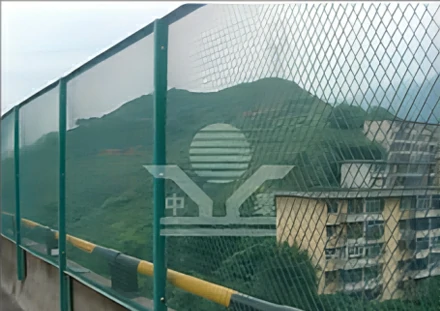The Aesthetic and Functional Appeal of Perforated Sheet Cladding
Perforated sheet cladding has emerged as a popular choice in modern architecture and construction, blending aesthetics with functionality. This innovative material, characterized by a series of holes or perforations in a variety of patterns and sizes, offers a unique solution for both exterior and interior applications. From commercial buildings to residential homes, perforated sheet cladding is revolutionizing the way we think about building facades and operational efficiency.
One of the primary advantages of perforated sheet cladding is its ability to enhance building aesthetics. Architects are increasingly utilizing these sheets to create visually striking designs that can manipulate light and shadow. The patterns of the perforations can be customized to suit the specific needs of a building, allowing for creative expressions that reflect the structure’s purpose, identity, and the environment in which it resides. For instance, decorative motifs can be laser-cut into the sheets, creating intricate designs that capture attention and intrigue passersby. As a result, buildings clad in perforated sheets become not merely shelters but works of art.
Beyond aesthetics, perforated sheet cladding also serves a critical functional purpose. One of its key features is the ability to improve ventilation. The perforations allow for air circulation, reducing reliance on mechanical ventilation systems and thus promoting energy efficiency. This passive design strategy not only lowers energy costs but also contributes to a more comfortable indoor climate. In hot climates, the breezy airflow can cool the building naturally, while in colder regions, it can help manage moisture levels, preventing issues like mold growth.
Moreover, the use of perforated cladding can enhance acoustic performance. In urban environments where noise pollution is a significant concern, these sheets can be designed to absorb sound, creating a quieter indoor atmosphere. The specific arrangement of perforations can effectively mitigate unwanted noise from outside, making it ideal for residential buildings located near busy streets or commercial areas.
perforated sheet cladding

Durability is another key benefit. Perforated sheets are often made from robust materials like aluminum or stainless steel, which are resistant to corrosion and weathering. This makes them suitable for various climates and increases their longevity as a building material. Additionally, maintaining perforated cladding is generally easier than traditional finishes, as they can be cleaned and repaired without requiring major renovations.
Sustainability is increasingly being prioritized in modern construction, and perforated sheet cladding aligns well with this trend. Manufacturers often produce these panels using recyclable materials, which contribute to a reduced carbon footprint. Moreover, the natural ventilation promoted by these cladding systems can lead to significant energy savings, aligning with global initiatives aimed at combating climate change. By opting for materials that support sustainable practices, architects can design buildings that harmonize with their surroundings and reduce environmental impact.
Furthermore, the versatility of perforated sheet cladding cannot be overstated. It can be employed across various design applications—from commercial office spaces to residential projects, from industrial buildings to cultural institutions. Its ability to blend functionality with unique design characteristics makes it suitable for any purpose. Whether used to create a sleek, contemporary look or to evoke a rustic charm, perforated sheets cater to diverse architectural styles.
In conclusion, perforated sheet cladding embodies a harmonious blend of beauty and practicality in modern architecture. Its capacity to enhance aesthetic appeal while providing operational benefits, such as improved ventilation and acoustic performance, makes it a compelling option for designers and builders alike. As the industry continues to evolve towards sustainable practices, the significance of materials like perforated sheet cladding will only grow. This innovative approach not only transforms the appearance of buildings but also contributes to more efficient and environmentally friendly construction practices, paving the way for a future where architecture is both functional and artistically enriching.
-
Why Galvanized Trench Cover Steel Grating Resists Corrosion
NewsJul.10,2025
-
The Versatility and Strength of Stainless Expanded Metal Mesh
NewsJul.10,2025
-
Load Calculations in Steel Grating Platforms
NewsJul.10,2025
-
Keeping Pets and Kids Safe with Chicken Wire Deck Railing
NewsJul.10,2025
-
Hole Diameter and Pitch for Round Perforated Metal Sheets
NewsJul.10,2025
-
Aluminium Diamond Mesh in Modern Architecture
NewsJul.10,2025
Subscribe now!
Stay up to date with the latest on Fry Steeland industry news.

